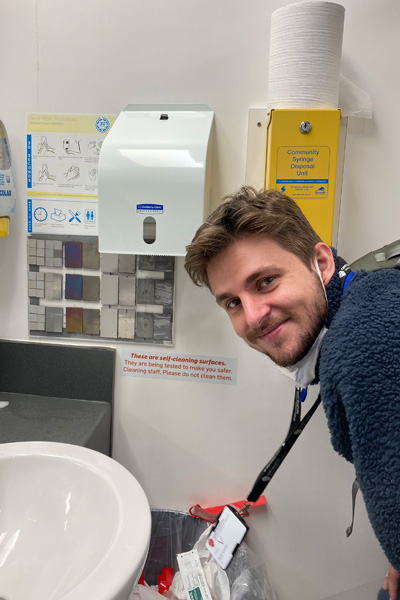Testing of nanotextured materials with antiviral activity in hospital areas: The Antimicrobial Surface Study
Yarlagadda, P. Schuetz, M. Spann, K. Roberts, J. Jaggessar, A. Irwin, A. Velic, A. Mathew, A. Manzanero, S. Jacobson, E. Woods, B.
 Clinicians, researchers and facility managers from Metro North Hospital and Health Service and Queensland University of Technology (QUT) collaborated with researchers from the Indian Institute of Science to generate novel nanotextured materials. This research was supported by a grant awarded in 2021 from the Australia-India Strategic Research Fund.
Clinicians, researchers and facility managers from Metro North Hospital and Health Service and Queensland University of Technology (QUT) collaborated with researchers from the Indian Institute of Science to generate novel nanotextured materials. This research was supported by a grant awarded in 2021 from the Australia-India Strategic Research Fund.
Exposure of nanomaterials to virus and bacteria was performed at QUT laboratories and showed that the materials are antibacterial and antiviral, able to inactivate severe acute respiratory syndrome coronavirus-2 (SARS-CoV-2) amongst other pathogen species. The nanomaterials were also studied within the Royal Brisbane and Women’s Hospital (RBWH) to evaluate the utility of antipathogenic nanomaterials in hospital environments.
Surfaces were installed at designated sites at RBWH and were swabbed three times over 14 days to measure viral and bacterial load. The goal was to identify if the use of these surfaces in high traffic areas within RBWH (such as public toilets as shown in the photo) could assist with reducing surface contamination and therefore reduce the risk of infection transmission to staff, visitors, and patients. Bacterial loads identified from the swabs were low, although some bacteria were present. More robust conclusions may be provided by the inclusion of additional sampling in other areas of the hospital and/or additional experimental methods.
No respiratory viruses were detected at any time by PCR, which could be due to heightened hygiene, such as mask wearing and hand hygiene, during COVID-19 pandemic restrictions. Follow up studies to expand upon these findings may include placement of the surfaces in an infectious disease ward and/or a ward or outpatient area designated for children. Investigation to include gastrointestinal viruses, such as norovirus, which causes vomiting and diarrhoea, will be considered in the future.
Follow-up studies may also include testing larger nanotextured surfaces on directly touched items, such as an entire door push. Overall, this study generated valuable insight into the challenges and possible benefits of such work, providing promising avenues of further research. This study is an excellent example of proactive collaboration of hospital facilities staff, clinicians, and university-based partner researchers.
